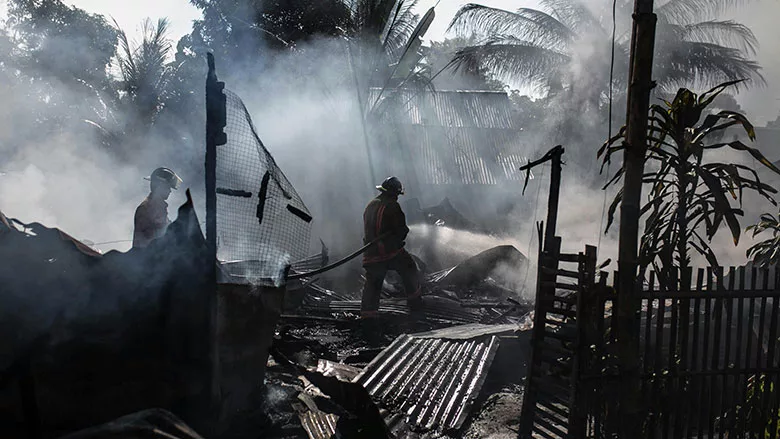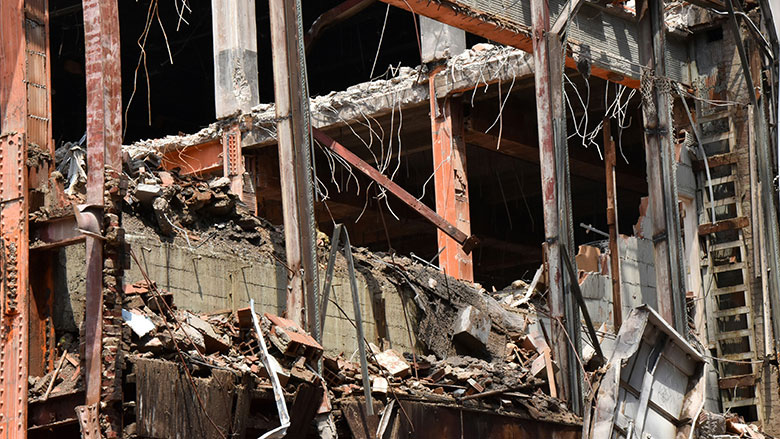Leveraging BIM Technology for Efficient Restoration and Remediation
Building Information Modeling Aids Restoration & Remediation

Photo: pexels.com
In the AEC (architecture, engineering, and construction) fields, very few tools have revolutionized the industry like BIM (building information modeling). This constantly evolving technology has totally changed the way buildings are designed. However, with recent software developments, BIM is no longer limited to the pre-construction phases of a project. The utilization of BIM technology is steadily becoming standard practice in facility management and, when necessary, post-disaster remediation and restoration.
The Role of BIM in Post-Disaster Assessment
After a disaster, whether natural or man-made, the ability to react quickly gives building owners and other stakeholders the best chance at saving a structure and, in some cases, lives. BIM technology ensures that engineers, first responders, and emergency services can act as quickly as possible. In a post-disaster situation, BIM-aided assessment can facilitate the following protocols:
Comparing Pre- and Post-Disaster Building Conditions
Having a complete as-built model that reflects a building's structural state is critical to the post-disaster assessment process. By comparing the original building schematics with post-disaster conditions, engineers can quickly calculate the materials needed for restoration, allowing the project to begin without delay.
Additionally, as-built construction models provide a clear and accurate representation of the damage sustained to a structure, reducing the amount of time-consuming inspections needed to file insurance claims.
Collaboration with Emergency Services
For first responders like search and rescue workers, BIM data is an invaluable tool, and in many cases, it can mean the difference between life and death. These workers can use existing facility information to predict the most likely locations where workers and building visitors may be trapped after a disaster.
Remediation and Restoration Planning
After the emergency services have completely evacuated the building, a physical damage assessment can commence. Carefully designed 3D models integrate structural information and real-time geographical data, which can give a deeper understanding of the extent of the damage both to the structure and the ground on which it was built. The information an engineering team can collect about a disaster leads to efficient remediation and restoration planning.
Improved Safety Procedures
Forbes magazine recently published their 2024 list of the ten most dangerous jobs in America. On that list, four out of the ten listed professions were directly related to construction. Unfortunately, the risks associated with these jobs significantly increase when dealing with a post-disaster situation.
Safety is of utmost priority for those tasked with cleaning up and restoring affected structures. BIM is crucial in optimizing construction safety as it facilitates the digital reconstruction of disaster sites. This allows remediation teams to accurately identify areas with the highest potential risks.

Photo: pexels.com
Optimizing Restoration and Remediation Processes with BIM
After the post-disaster assessment is complete, the remediation and restoration phase begins. Following a catastrophic event, the main objective is to salvage any components and materials not destroyed by a disaster and rebuild as quickly as possible without compromising safety or going over budget. Precision and accuracy are crucial to accomplish this goal successfully.
BIM's predictive features shine in restoration situations. They can help engineers find weak points in a building's design that contributed to its failure and apply that data to fortify its structural integrity in the construction phase. Remediation and restoration plans that incorporate BIM often benefit from significant improvements in the following areas:
Project Management Optimization
Even though BIM technology is primarily used as a visualization tool, its ability to detect potential design clashes preemptively makes it a valuable asset in a restoration project's estimation and planning phases.
By analyzing data collected before, during, and after a disaster, BIM software can suggest upgrades that will enhance building performance, prevent future structural failures, and keep remediation and construction costs to a minimum.
Maximization of Salvage Potential
Buildings are a significant investment. Organizations often spend millions of dollars on the design and construction of their structures. So, if there are components and materials that can be salvaged from a disaster's wreckage, stakeholders will go to great lengths to reclaim, recycle, and repurpose them.
This is especially true with historical buildings, where period-specific materials are difficult or even impossible to locate. BIM can help ensure that the recovery crew makes the best use of such rare materials while making sure that the historical site meets modern standards of safety and structural integrity.
Remediation in Sensitive Areas
Disaster remediation projects often occur near sensitive areas, like historical zones or protected nature areas. In these cases, project planners and managers need to give particular care to the methods used to remove hazardous materials.
BIM can create digital representations of construction sites, giving engineers more control over their remediation strategy. By simulating the phases of the project virtually, decisions can be made to minimize the overall construction footprint and avoid damage to sensitive areas.
Tools and Training for R&R Professionals
In order to take full advantage of BIM’s restoration and remediation potential, R&R professionals need to be well-equipped with the right technology and training. Here are some of the best resources available to those looking to get started with BIM-based restoration and remediation.
- A capable BIM software—Fully equipped BIM software such as Autodesk Revit makes modern disaster recovery possible. BIM programs allow for a side-by-side comparison of pre- and post-catastrophe models, allowing for streamlined planning and the creation of accurate reports needed to file insurance claims.
- Mobile BIM applications—Since much of the R&R process takes place in the field, having access to BIM information on the disaster site is crucial. When a damage analyst can upload and download information directly to a cloud-based platform, it prevents data loss and facilitates better communication among team members.
- Laser scanning tools - Lasers like those offered by Leica Geosystems are invaluable for capturing post-diaster damage. These lasers scan an area and generate digital 3D representations of the affected building, allowing for direct comparisons with the as-built models.
- Drones—Drones are an essential tool for all R&R professionals, as they allow for safe aerial inspection and documentation of disaster damage.
- Disater-centered BIM training—Training programs offered by recognized institutions provide restoration professionals with the skills they need to use BIM in a disaster relief environment, helping them be ready for any potential eventuality.
Finding Disaster Capable Experts: A Significant Challenge
The biggest challenge with BIM-implemented disaster recovery is finding engineers capable of utilizing the technology in this capacity. When compared with other AEC disciplines, there are relatively few BIM experts who specialize in post-disaster cleanup and construction.
Since no two disasters are alike, educating and training engineers for every possible eventuality can be difficult.
The problem is that BIM and those who use it learn from each individual disaster and apply their discoveries to future remediation strategies. Since no two disasters are alike, educating and training engineers for every possible eventuality can be difficult.
Unfortunately, disasters are becoming seemingly more and more common. According to Our World in Data, a resource provided by Oxford University, over the past 20 years, there has been roughly a 100% increase in the number of recorded natural disasters. However, there is a bright side to this concerning statistic. Every disaster, whether natural or man-made, presents an opportunity for education and advancement in BIM-related remediation and recovery strategies. Though these unforeseen events can have devastating effects, they contribute to stronger architectural practices.
Future Trends: BIM and Disaster Recovery Evolution
Looking to the future, BIM-incorporated disaster recovery strategies have the potential for massive improvements. As machine learning and AI (artificial intelligence) algorithms continue to advance, software engineers at major corporations like Autodesk are preparing their BIM programs to integrate these revolutionary technologies. Combining BIM with sophisticated AI tech has the potential to enhance the predictive capabilities of modern software, allowing stakeholders to prepare for catastrophic events before they even occur.
Additionally, countless hours of research are currently being dedicated to developing the "Digital Twin" concept. This is a system that combines 3D modeling with real-time sensor data to create an extremely accurate digital version of an existing structure as it stands in its environment. As changes, or in this case damages, occur to the physical building, the virtual "twin" will automatically adjust to reflect them. Design trends like these have the potential to save engineers precious time following a disaster, allowing for faster and more efficient recovery.
Looking for a reprint of this article?
From high-res PDFs to custom plaques, order your copy today!





